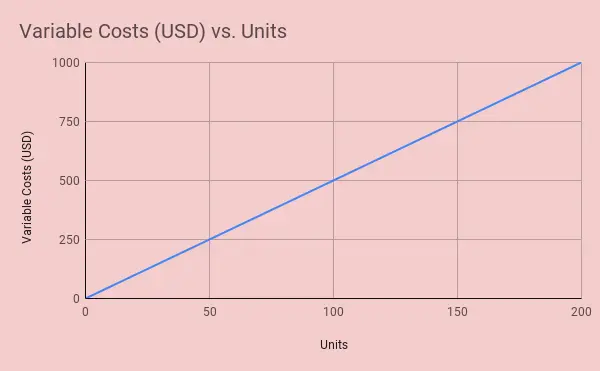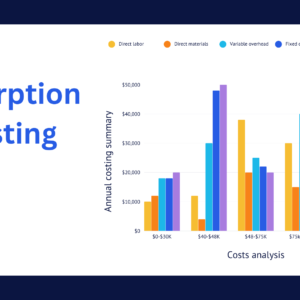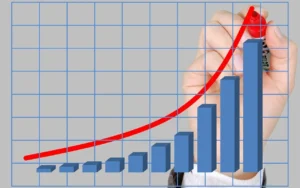- Variable costing explained
- Variable costing formula
- Types of variable costs
- Variable costing in the decision-making process
- Variable costing income statement
- Variable costing vs Absorption costing
- A practical example of variable costing
- Variable costing in external financial reporting
- Advantages of variable costing
- Limitations of variable costing
Variable costing explained
Variable costing is a widely used managerial accounting technique that focuses on the behavior of costs within a business. Unlike traditional costing methods, which allocate fixed and variable costs to products or services, variable costing considers only the variable costs as direct expenses. Variable costs, such as direct materials, direct labor, and variable overhead, vary in proportion to the level of production or sales activity.

By separating variable costs from fixed costs, variable costing provides a clearer picture of how costs fluctuate with changes in production volumes. This approach enables managers to make informed decisions regarding pricing, product mix, and resource allocation. With its emphasis on the direct relationship between costs and activity levels, variable costing offers valuable insights into a company’s profitability and aids in effective cost control and planning.
Variable costing formula
The formula for variable costing is relatively straightforward. It calculates the cost of a product or service by summing up all the variable costs associated with its production. The formula is as follows:
Variable Cost per Unit = Direct Materials + Direct Labor + Variable Overhead
Let’s consider an example to illustrate this. Suppose we have a company that manufactures bicycles. The variable costs involved in producing one bicycle are as follows:
# Direct Materials (steel, tires, brakes, etc.): $100
# Direct Labor (wages for assembly workers): $35
# Variable Overhead (electricity, maintenance costs): $20
Using the formula, we can calculate the variable cost per unit:
Variable Cost per Unit = $100 + $35 + $20 = $155
So, in this case, the variable cost of producing one bicycle is $155. This means that for every bicycle produced, the company incurs $155 in variable costs. By analyzing the variable cost per unit, managers can assess the impact of changes in production levels on overall costs and make informed decisions regarding pricing, production volumes, and resource allocation.
Types of variable costs
Variable costs can be categorized into several types based on their nature and behavior within a business. Here are some common types of variable costs:
Direct Materials:
The cost of raw materials used in production.
Direct Labor:
Wages and benefits paid to employees directly involved in the production or service delivery.
Variable Overhead:
Expenses that fluctuate based on the level of production, such as utilities, maintenance, and supplies.
Sales Commissions:
Commissions paid to sales staff based on the quantity or value of sales.
Packaging and Shipping:
Costs related to packaging materials and transportation of goods.
Sales Discounts:
Discounts are offered to customers as an incentive to encourage sales.
Variable Marketing Expenses:
Costs of advertising, promotions, and other marketing activities that vary with sales volume.
Variable costing in the decision-making process
Variable costing plays a crucial role in the decision-making process of a business by providing relevant cost information.
Let’s consider an example to illustrate its impact:
Suppose a company is deciding whether to accept a special order from a new client. The client is requesting a large quantity of a product at a discounted price. The company needs to evaluate whether accepting the order will be financially beneficial.
By using variable costing, the company can assess the incremental impact of the special order on its costs, comparing the variable cost per unit of the product with the discounted price offered by the client. Accepting the order will result in a positive contribution margin if the variable cost per unit is lower than the discounted price.
Variable costing allows managers to identify the direct costs The use of variable costing allows managers to identify the direct costs associated with special orders, including direct materials, direct labor, and variable overhead.
By considering only these variable costs, the company can make a more accurate assessment of the profitability of the special order and determine if it is financially viable.
By analyzing the impact on profitability and the utilization of available resources, the company can determine whether to accept or reject the special order.
Variable costing income statement
A variable costing income statement, also known as a contribution margin income statement, is a financial statement that presents revenues, variable costs, and contribution margin as key components. It provides valuable insights into a company’s profitability and the relationship between costs and sales.
| Particulars | Amount |
| Sales Revenue | $500,000 |
| Variable Costs: | |
| – Cost of Goods Sold | $200,000 |
| – Variable Selling Expenses | $100,000 |
| Contribution Margin | $200,000 |
| Fixed Costs: | |
| Fixed Manufacturing Expenses | $80,000 |
| Fixed Selling and Administrative Expenses | $50,000 |
| Net Operating Income | $70,000 |
Variable costing vs Absorption costing
| Variable Costing | Absorption Costing | |
| Treatment of Fixed Costs | Fixed costs are treated as period expenses and not assigned to products or services. | Fixed costs are allocated to products or services as part of the cost per unit. |
| Cost Classification | Only variable costs are considered in the product cost. | Both variable and fixed costs are included in the product cost. |
| Income Statement | Contribution margin income statement is used, which focuses on the relationship between variable costs and sales revenue. | Traditional income statement is used, which includes both variable and fixed costs in the cost of goods sold. |
| Impact on Profitability | Net operating income may fluctuate with changes in sales volume as fixed costs are not absorbed into the product cost. | Net operating income can be influenced by changes in sales volume due to the absorption of fixed costs. |
| Decision Making | Provides better insights into the profitability of individual products and helps with pricing and product mix decisions. | Provides a comprehensive view of costs but may not offer detailed insights into the profitability of individual products. |
| External Reporting | Not compliant with generally accepted accounting principles (GAAP) and typically used for internal management purposes. | Compliant with GAAP and required for external financial reporting. |
A practical example of variable costing
Let’s consider a practical example of variable costing in a manufacturing company. The company produces and sells widgets.
The variable costs associated with producing one widget are as follows:
- Direct Materials: $5
- Direct Labor: $3
- Variable Overhead: $2
In a given month, the company produces and sells 1,000 widgets. Using variable costing, we can calculate the total variable costs incurred: Total Variable Costs = (Direct Materials + Direct Labor + Variable Overhead) x Number of Units Total Variable Costs = ($5 + $3 + $2) x 1,000 Total Variable Costs = $10,000
By using variable costing, the company can see that the cost of producing 1,000 widgets amounts to $10,000. This information allows managers to analyze the cost structure, determine the break-even point, evaluate pricing strategies, and make informed decisions regarding production levels and resource allocation based on the direct relationship between costs and activity levels.
Variable costing in external financial reporting
Variable costing is typically not used for external financial reporting purposes as it does not comply with generally accepted accounting principles (GAAP). External financial reporting requires the use of absorption costing, which includes both variable and fixed costs in the cost of goods sold. Absorption costing is required to provide a comprehensive view of costs and to adhere to the matching principle, where costs are matched with the revenues they help generate.
External financial statements, such as the income statement, balance sheet, and statement of cash flows, are prepared using absorption costing to accurately reflect the overall financial performance and position of a company. These statements are used by investors, creditors, and other external stakeholders to make informed decisions and assess the financial health of the organization.
Advantages of variable costing
Cost-Volume-Profit Analysis:
Variable costing provides a clear understanding of the relationship between costs, sales volume, and profitability. This allows managers to perform cost-volume-profit analysis and make informed decisions regarding pricing, production levels, and sales strategies.
Accurate Product Profitability Analysis:
By focusing on variable costs, variable costing enables managers to accurately analyze the profitability of individual products or services. This helps identify high-profit and low-profit items, allowing for strategic decisions on pricing, promotion, and product mix.
Facilitates Decision-Making:
Variable costing provides relevant cost information that aids in decision-making. It helps evaluate the financial impact of accepting special orders, discontinuing products, or outsourcing production, enabling managers to make informed choices and optimize resources.
Cost Control and Performance Evaluation:
Variable costing highlights the controllable costs that directly vary with production or sales volume. This facilitates cost control efforts by identifying cost drivers and allows for better performance evaluation and comparison.
Simplified and Clearer Income Statements:
Variable costing simplifies income statements by separating fixed costs from variable costs, resulting in a clearer view of costs and their impact on profitability. This facilitates a better understanding and analysis of financial results.
Limitations of variable costing
Incomplete Cost Allocation:
Variable costing excludes fixed costs from product costs, which can lead to incomplete cost allocation and distort the true cost of producing goods or services.
Ignoring Fixed Costs:
By not considering fixed costs in product costs, variable costing may not provide a comprehensive view of total costs and profitability, which can affect decision-making.
Compliance with External Reporting:
Variable costing is not compliant with generally accepted accounting principles (GAAP) and is not suitable for external financial reporting, which requires the use of absorption costing.
Limited Usefulness for Long-Term Decision-Making:
Variable costing focuses primarily on short-term cost behavior and may not provide accurate insights for long-term decision-making or capital budgeting.





Can you be more specific about the content of your article? After reading it, I still have some doubts. Hope you can help me.
Sure